AMD vs Intel Motherboards: Which One Should You Buy?

When you’re building or upgrading a PC, choosing the right motherboard can feel a little intimidating — especially when it comes down to the age-old rivalry of AMD vs Intel motherboards.
Both brands make fantastic hardware, but each has its strengths. Whether you’re planning a high-end gaming rig, a creative workstation, or an everyday PC, the motherboard you choose will shape your system’s performance, features, and future-proofing.
In this guide, we’ll compare Intel vs AMD motherboards across performance, chipsets, memory, overclocking, and more. By the end, you’ll know exactly which option suits your needs in 2025.
What Exactly is a Motherboard?
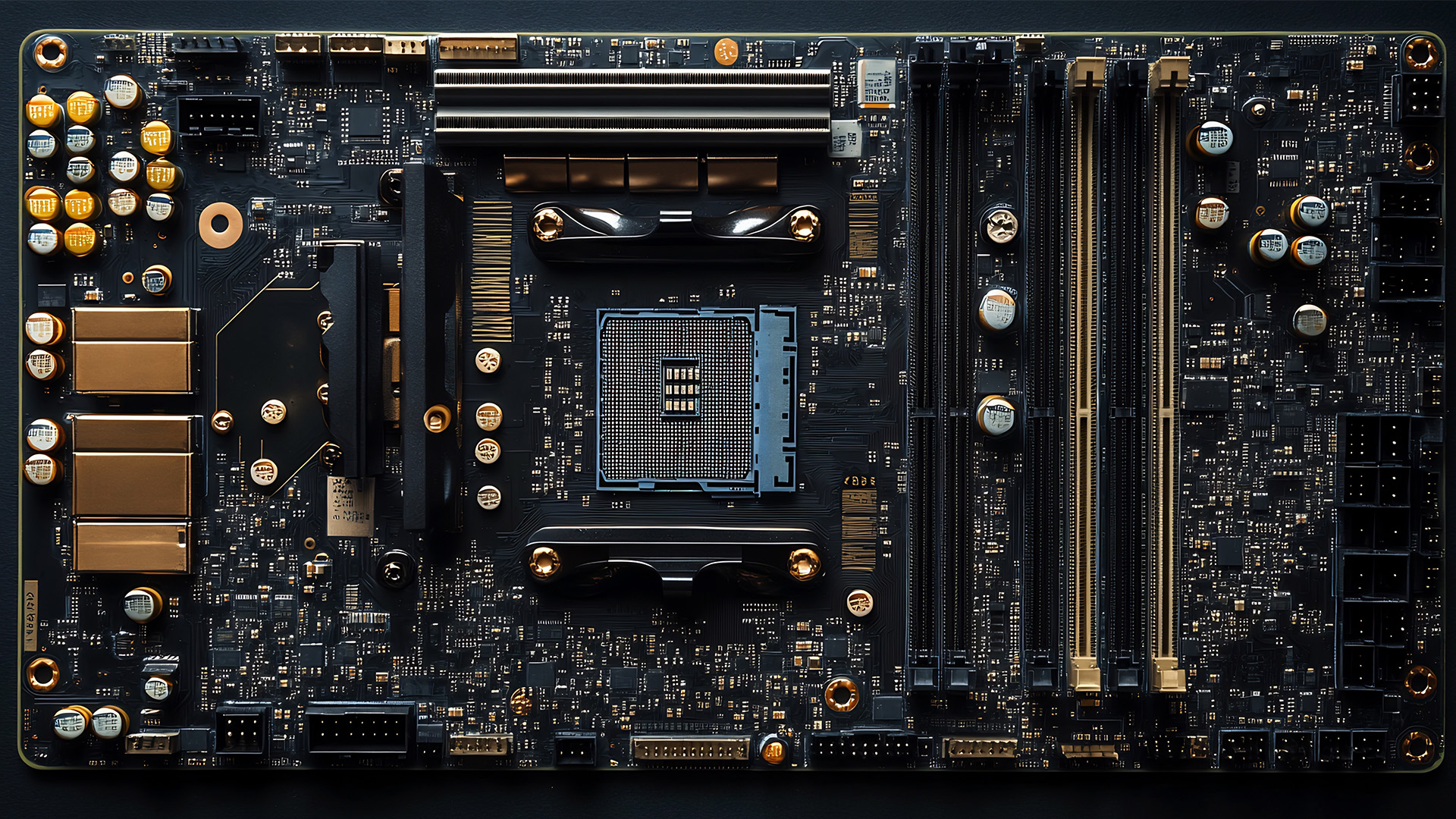
Before diving into the AMD vs Intel motherboards comparison, let's briefly clarify what a motherboard is and why it's so important.
Often called the 'mainboard' or 'system board,' the motherboard is the central printed circuit board (PCB) in a computer. It is, quite simply, the foundation and communication hub for all other components.
It houses the CPU socket (where your processor sits), the chipset (which manages communications), RAM slots, and the various connectors for your graphics card, storage, and peripherals.
Everything—from your latest processor models to your speedy SSD—connects to the motherboard, making it a critical choice that determines your system's overall capabilities, speed, and potential for future expansion.
The Core Difference: CPU Socket and Chipset
At the most basic level, the fundamental difference between AMD and Intel motherboards lies in the CPU socket and the associated motherboard chipset.
The CPU Socket

The socket is the physical connector that holds your processor onto the motherboard. AMD and Intel use completely different sockets, making their processors incompatible with the other's motherboards.
- Intel: Currently uses the LGA 1851 socket for its latest Core Ultra (Series 2) processors and the older LGA 1700 for its 12th, 13th, and 14th Gen chips. Historically, Intel often changes the socket with every couple of generations, which can limit your future upgrade path without replacing the motherboard.
- AMD: Uses the AM5 socket for all its modern Ryzen 7000, 8000, and 9000 Series processors. AMD has a better track record of supporting a single socket for multiple generations, offering better longevity and a simpler upgrade path.
The Motherboard Chipset
The chipset is a set of microchips on the motherboard that manages data flow between the processor, memory, and peripherals. Different chipsets offer different features, connectivity options (like USB and PCIe lanes), and overclocking support.
|
Platform |
Enthusiast/Overclocking |
Mainstream/Gaming |
Budget/Entry-Level |
|
Intel |
Intel Z890 (LGA 1851) |
B860 (LGA 1851) |
H810 (LGA 1851) |
|
AMD |
AMD X870 / X870E (AM5) |
B850 (AM5) |
A620 (AM5) |
For example, a top-tier Intel Z890 board is necessary if you want to perform serious overclocking on a high-end Intel processor Similarly, the AMD X870 or X870E chipsets provide the most robust power delivery and connectivity options for AMD’s flagship Ryzen CPUs.
Choosing a B-series chipset (like B850 or B860) will generally save you money while still providing solid performance for most users, including gamers, but often with reduced connectivity and sometimes restricted overclocking features.
Performance and Feature Comparison
The true measure of the AMD vs Intel performance on motherboards is less about raw speed and more about what features each platform provides to get the most out of your chosen processor.

DDR5 vs DDR4 Motherboards
In 2025, the transition to DDR5 RAM is a major factor.
- AMD (AM5): The AM5 platform only supports DDR5 motherboards. This gives you access to the fastest RAM speeds, offering a significant jump in memory bandwidth over the older standard, which is particularly beneficial for high-refresh-rate gaming and productivity workloads like video editing.
- Intel (LGA 1700): Some older-generation Intel motherboards (like Z790/B760) support either DDR4 or DDR5, but not both on the same board. However, the latest LGA 1851 platforms are moving exclusively to DDR5.
If you are aiming for peak performance and building a system that will last for years, choosing a DDR5 motherboard is the smart move.
DDR5 vs DDR4 shows DDR5 offers greater speed, higher capacity potential, and improved power efficiency, even if the initial investment in DDR5 RAM is slightly higher. For a true future-proof system, DDR5 is essential.
Check out the selection of DDR4 RAM and DDR5 RAM kits to pair with your new motherboard.
Overclocking Support
For power users, overclocking support is a must-have, allowing you to manually push your CPU and RAM past their factory settings for extra performance.
- Intel: You must choose a Z-series chipset (Intel Z890 is the latest) and a ‘K’ or ‘KF’ series processor (e.g., Core Ultra 9 285K) to fully unlock the CPU for overclocking. Lower-tier motherboards restrict this capability.
- AMD: AMD is more flexible. Overclocking is possible on its B-series motherboards (like B850), though the X-series (like AMD X870) generally offers more robust power delivery and cooling for extreme tweaking. AMD also provides an easy memory overclocking profile called EXPO (Extended Profiles for Overclocking), which is similar to Intel’s XMP.
If getting every bit of performance is your goal, both platforms offer excellent high-end motherboards for overclocking.
Use Case: Intel or AMD for Gaming and Content Creation
When it comes to deciding between Intel or AMD for gaming or professional work, your specific needs should dictate which platform and chipset you choose.
Best Motherboards for Gaming
For high-end gaming in 2025, the competition is fierce.
|
Factor |
AMD Motherboard (AM5) |
Intel Motherboard (LGA 1851) |
|
Best Gaming CPU |
Ryzen 7 9800X3D (with 3D V-Cache) |
Core Ultra 7/9 K-series |
|
Gaming Performance |
Often holds the edge in overall frame rates and 1% low FPS, thanks to 3D V-Cache technology. |
Excellent single-core speed gives an advantage in certain competitive titles. |
|
Chipset for Gaming |
B850 or AMD X870 (for maximum connectivity and features). |
B860 or Intel Z890 (for CPU overclocking). |
For pure, top-tier gaming, the AMD platform, particularly when paired with an X3D CPU, often delivers the best gaming motherboard comparison results. However, Intel remains a powerful choice, especially for those who favour games that rely heavily on single-core performance.
Need help choosing the perfect motherboard for gaming? Checkout our guide on the best motherboards for gaming PCs in 2025 to take your gaming experience to the next level.
Best Motherboards for Content Creation and Multi-Tasking
For tasks like 4K video editing, 3D rendering, or heavy-duty streaming, multi-core performance and system connectivity are key.
- AMD: Ryzen processors, especially the high-core-count Ryzen 9 models, excel at multi-threaded tasks, giving them an advantage in workloads that can utilise all the cores and threads. The longevity of the AM5 socket also provides a good upgrade path.
- Intel: Intel's hybrid architecture (Performance and Efficiency cores) is highly effective at managing diverse, multi-tasking workloads, though AMD often offers better performance-per-pound in raw core count.
The choice here often comes down to budget and specific software optimisation. Both platforms offer capable motherboards with excellent I/O (input/output) like multiple high-speed M.2 slots, fast USB ports, and high-speed networking.
Discover top 5 motherboards for content creators and streamers in 2025 to power your next project.
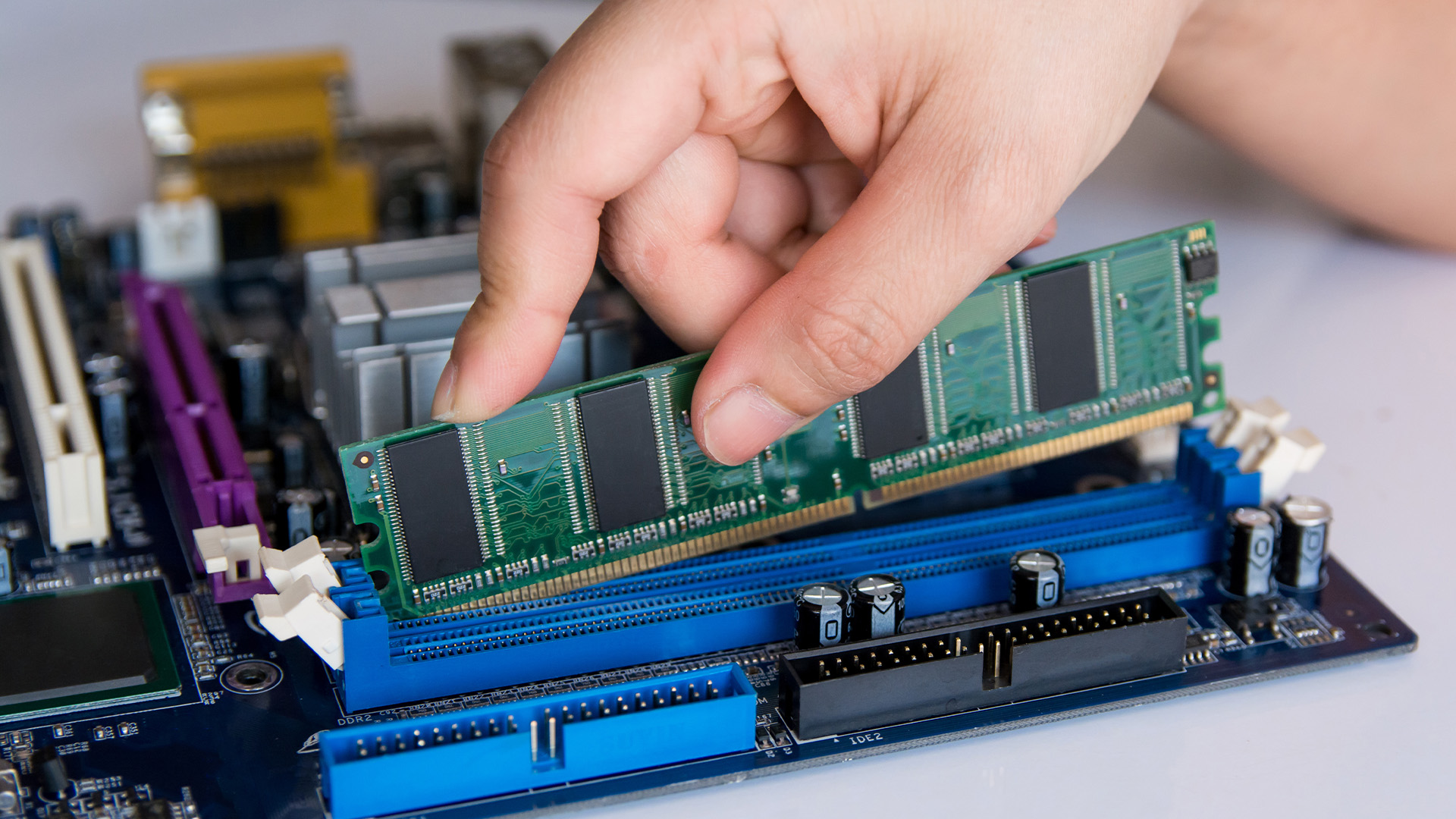
Longevity and Upgrade Path
A significant factor in the Intel vs AMD motherboards comparison is platform longevity.
AMD's Advantage: Socket Longevity
AMD’s commitment to its AM5 socket for several generations means that if you select the right motherboard for PC now—even a mid-range B850 board—you have a much higher chance of being able to drop in a next-generation AMD processor (from our list of latest processor models) a few years down the line without needing to buy a new motherboard. This makes the AMD platform a solid choice for those who prioritise future-proofing.
Intel's Approach: Feature Refresh
Intel traditionally favours introducing a new socket more often, meaning an upgrade to a newer CPU generation often requires a new motherboard. While this can be more costly over time, it ensures you always have access to the absolute latest platform features sooner.

So, Which One Should You Buy?
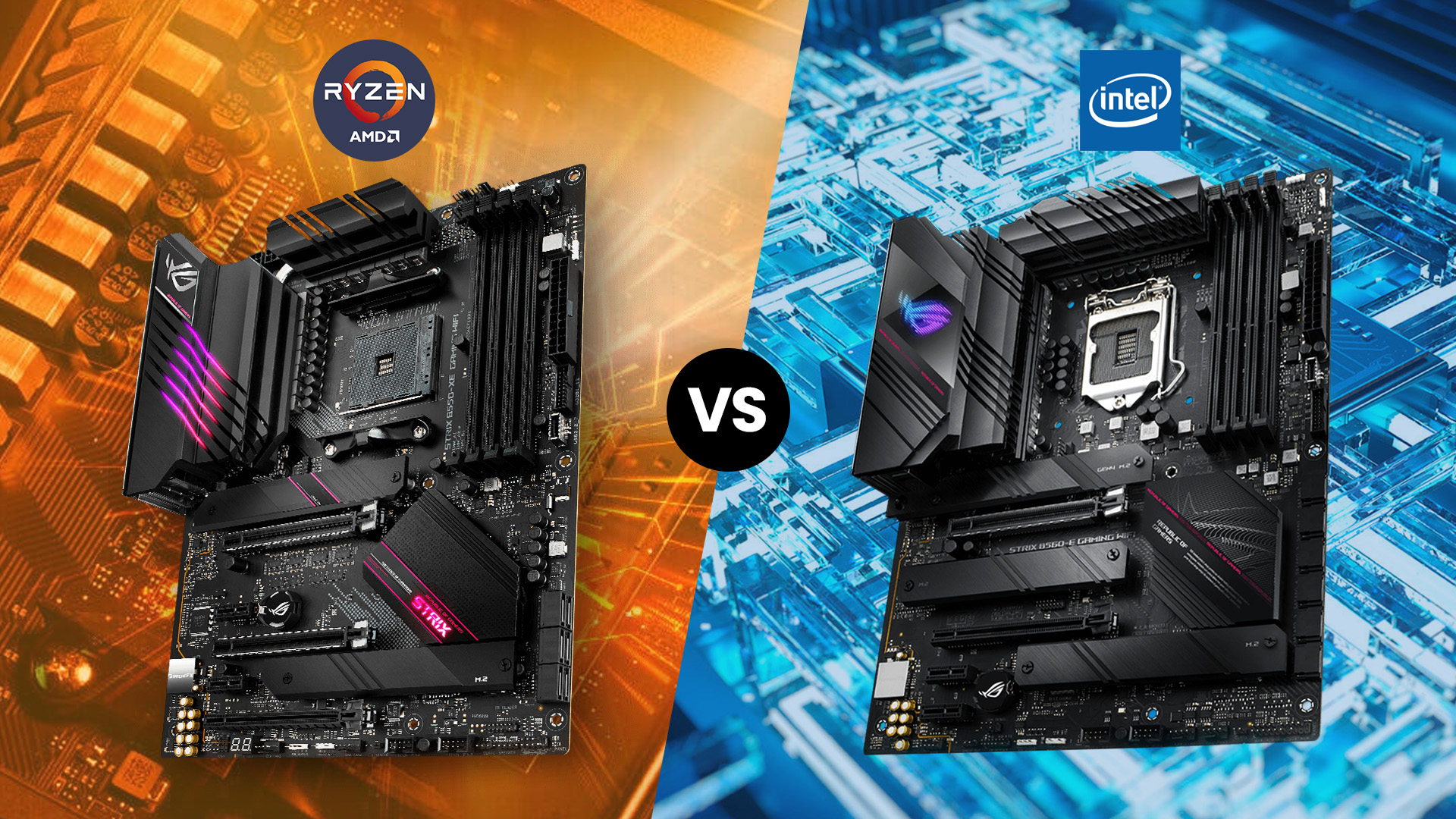
The best motherboard for PC isn’t defined by the brand name—it’s about choosing the platform that fits your performance goals and upgrade plans.
1. For Pure Gaming and Future-Proofing:
Choose AMD. The current AM5 socket offers superior longevity and the X3D processors provide unbeatable gaming performance. Look at a B850 or AMD X870 board paired with DDR5 RAM.
2. For the Enthusiast Overclocker & Latest Features:
Choose Intel. The top-tier Intel Z890 motherboards offer unparalleled power delivery and highly refined overclocking support. If you want the fastest single-core speed possible and are happy to replace your motherboard for the next CPU generation, Intel is a great choice.
3. For the Balanced Build (Mid-Range):
Choose AMD. An AMD B850 motherboard offers an excellent mix of performance, features, and value, with a clear path for a future CPU upgrade.
In summary, the AMD vs Intel Motherboards debate boils down to upgrade path (AMD wins) versus single-generation top-end performance (Intel often leads in select areas). Both brands offer fantastic, feature-rich motherboards in 2025; your decision should align with your long-term PC building strategy.
Explore our carefully curated future-proof motherboards for 2025 and beyond to plan your ultimate PC upgrade today!

Just to Clear Up Any Confusion
How do I decide between Intel and AMD when looking at the latest motherboards?
Start with a full motherboard chipset comparison; decide if you need full features (Z890/X870) or a mid-range B-series for balanced performance.
What are the key differences between the Intel Z890 vs AMD X870 chipsets?
Choosing between Intel Z890 vs AMD X870 depends on your CPU. Z890 supports Intel's latest CPUs (LGA 1851), while X870 is for AMD's high-end Ryzen CPUs (AM5), affecting socket and platform features.
Can I install an AMD CPU on an Intel motherboard?
No, because different CPU brands use different physical sockets (e.g., AMD's AM5 and Intel's LGA 1700).
Which is the best motherboard for gaming in 2025?
For premium performance, Intel Z890 and AMD X870/X870E high-end boards are top contenders, but mid-range B-series boards often offer the best value for most gamers.
Should I buy a motherboard that still supports DDR4 RAM in 2025?
For a new build, no. DDR5 vs DDR4 motherboards shows DDR5 offers better bandwidth and longevity; it's the standard for all new Intel and AMD platforms.
Related Articles
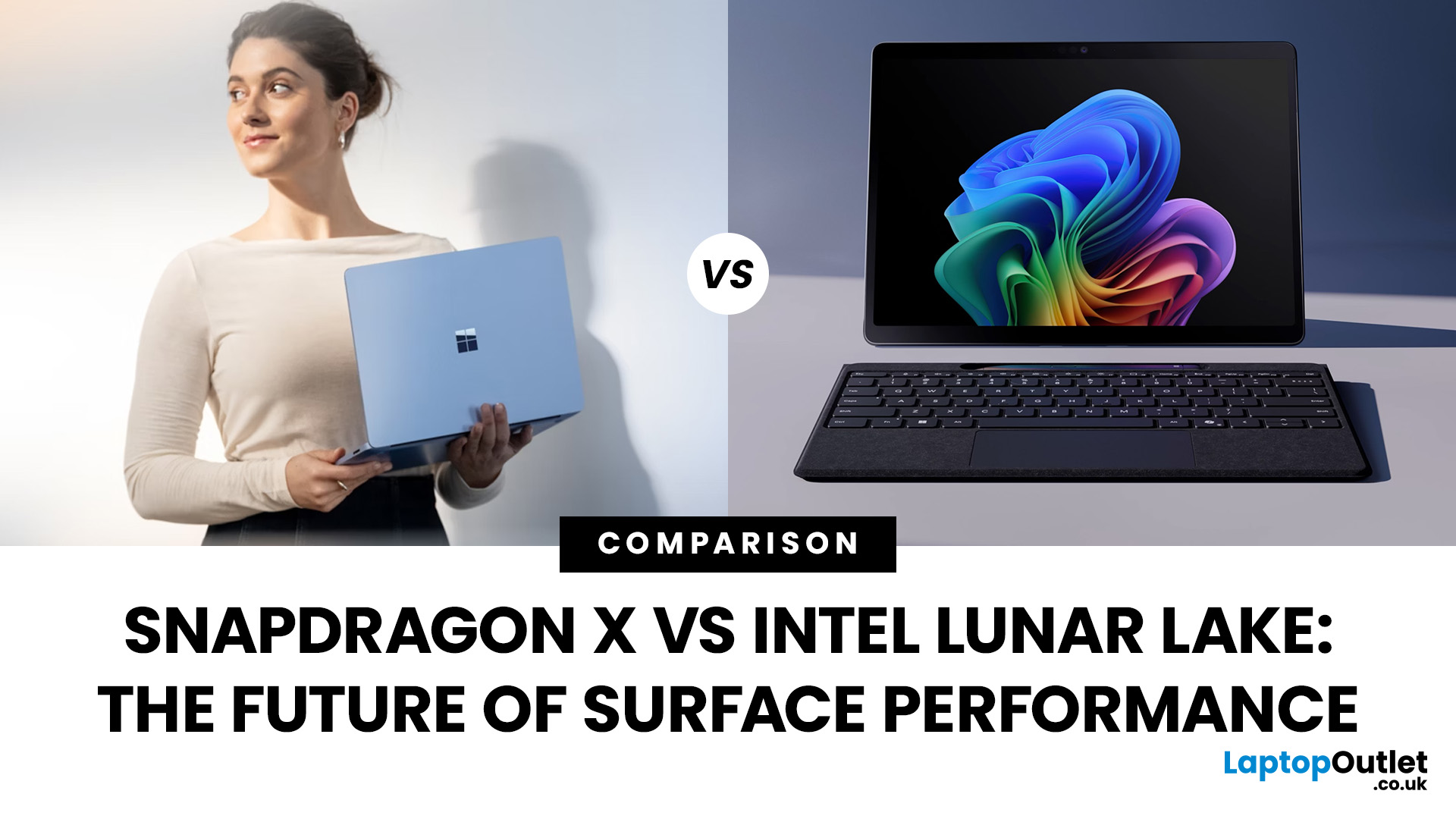
September 23, 2025
If you’re eyeing up the latest Surface Pro or Surface Laptop, you’re probably staring at a new kind of fork in the road: Snapdragon X vs Intel Lunar Lake. Microsoft now sells Surface models powered by both Qualcomm’s Arm-based Snapdragon X chips and Intel’s next-gen Lunar Lake processors and on paper, both promise better battery life, faster AI features, and a quieter, cooler experience. But the right choice depends on how you use your Surface today (and what you’ll need from it tomorrow).
In this guide, we’ll unpack how each platform works, what the benchmarks and battery tests actually mean, where Windows on Arm stands versus x86, and how to decide with clear recommendations for everyday users, creatives, students, coders, and gamers. We’ll also flag real-world quirks (like app compatibility and battery bugs) you should know before you buy.
Snapdragon X: Arm Power and All-day Efficiency
Qualcomm’s Snapdragon X Elite and X Plus chips launched Microsoft’s Copilot+ PC era in mid-2024.
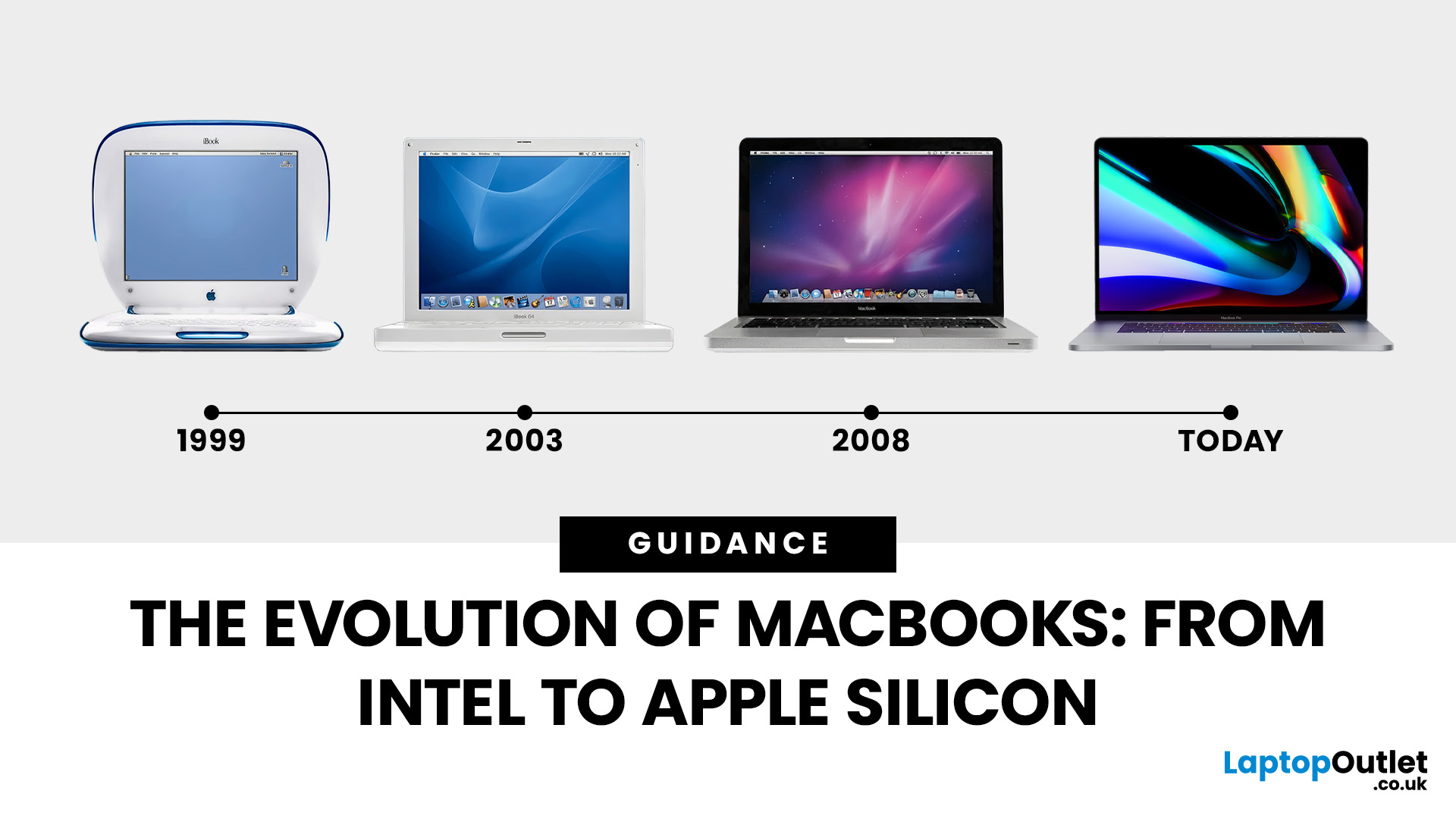
October 07, 2025
Few products have shaped modern computing quite like the Apple MacBook. From its early Intel-powered beginnings to today’s lightning-fast Apple Silicon machines, the MacBook has consistently pushed the boundaries of laptop design, performance, and portability. Along the way, it’s become a symbol of premium computing - beloved by students, professionals, and creative powerhouses worldwide.
But the evolution of Apple MacBooks hasn’t always been smooth sailing. There have been bold design shifts, controversial choices (remember the butterfly keyboard?), and groundbreaking innovations like Retina displays and MagSafe. The biggest leap of all came in 2020, when Apple ditched Intel processors in favour of its own Apple Silicon chips - a move that completely redefined, what users could expect from a laptop.
In this guide, we’ll take you through the full MacBook journey: from its early days, through key design changes and the Intel era, right up to the Apple Silicon transition and the future of
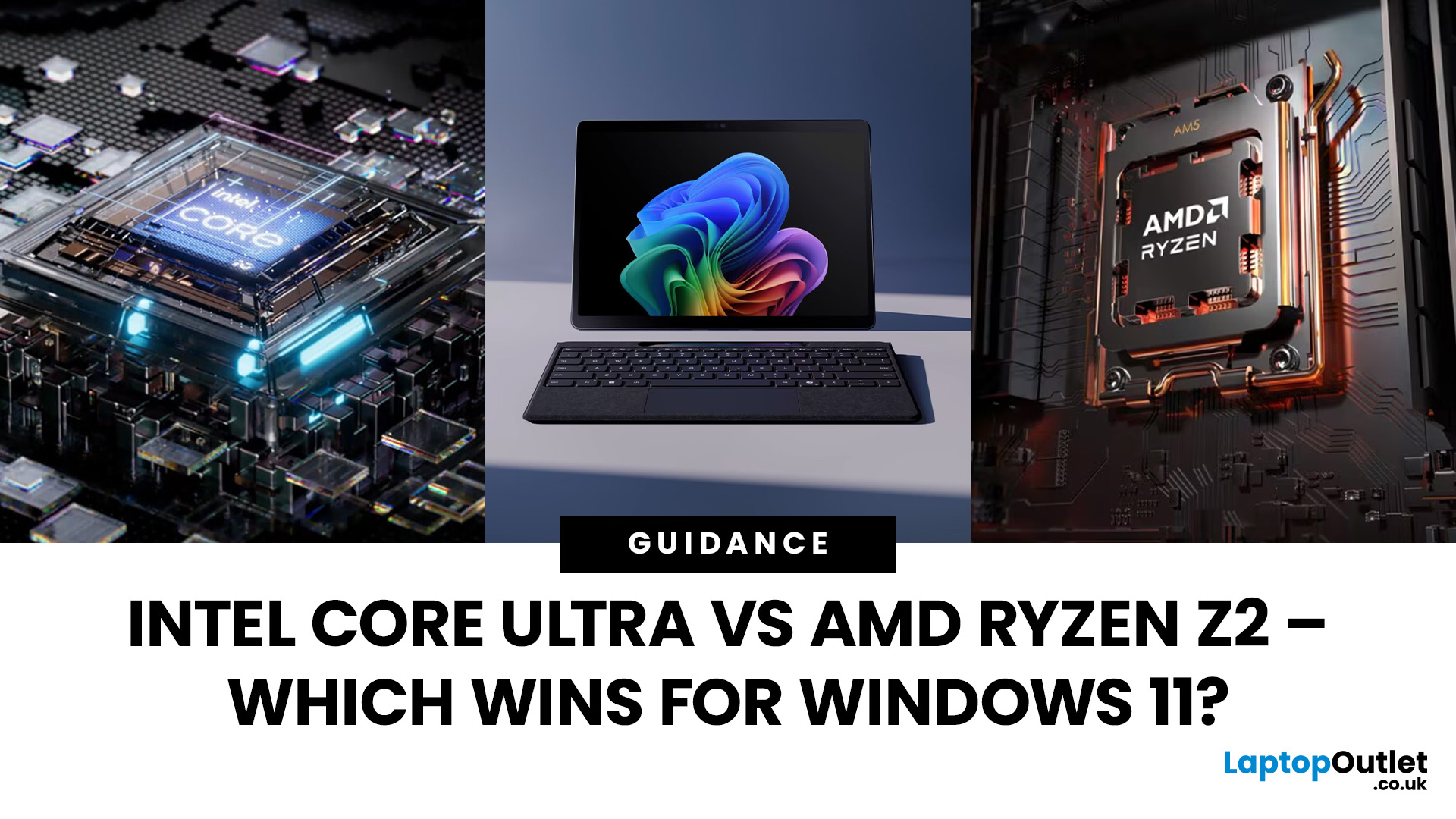
October 08, 2025
The battle between Intel and AMD has shaped the laptop world for decades. With the release of Intel Core Ultra processors and the new AMD Ryzen Z2 series, that rivalry has entered a new phase - one defined not just by raw speed, but also by AI integration, efficiency, and Windows 11 optimisation.
Intel’s Core Ultra chips (available in Core Ultra 5, 7, and 9 tiers) mark a major shift in design, blending performance and efficiency cores with a dedicated AI NPU (Neural Processing Unit). Meanwhile, AMD’s Ryzen Z2 processors are raising eyebrows with their RDNA 3.5 graphics and strong balance between performance and battery efficiency.
So, which one is better for you? In this guide, we’ll break down the Intel vs AMD Windows 11 laptops debate, comparing performance, AI features, battery life, and creative workloads. Whether you’re a student, gamer, or professional, by the end you’ll know which processor suits your needs.
Intel Core Ultra – What’s New?
Intel’s Core Ultra range is its most significant
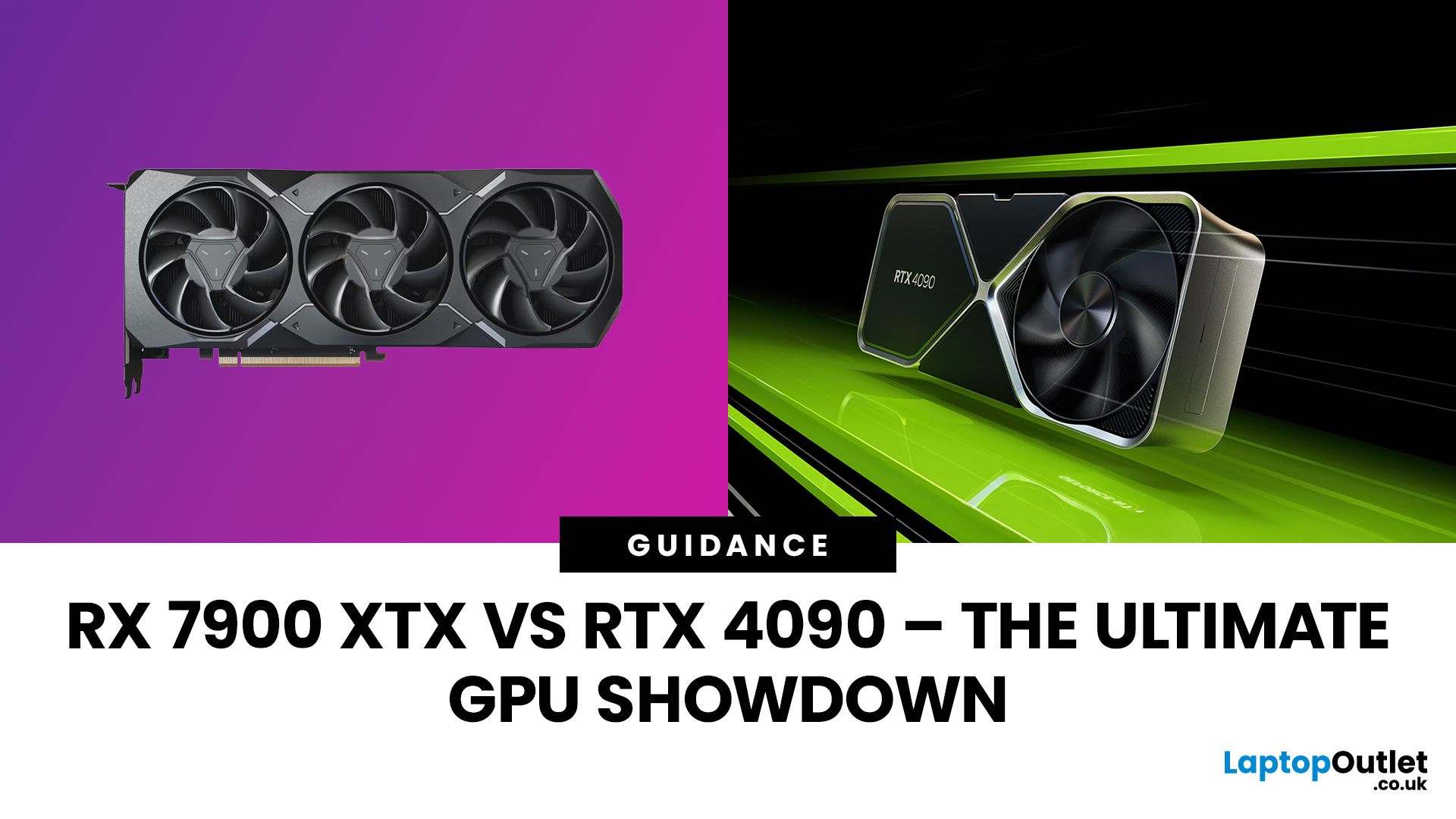
October 23, 2025
The AMD Radeon RX 7900 XTX and NVIDIA RTX 4090 are 2025’s top-tier GPUs, built for 4K gaming and professional workloads. The RTX 4090 leads in raw power, ray tracing, and AI acceleration, while the RX 7900 XTX challenges it with lower cost and strong raster performance. This isn’t about branding, it’s about what delivers the best performance per pound. In this breakdown, we’ll compare specs, gaming benchmarks, ray tracing, AI workloads, thermals, and overall value to determine which flagship GPU truly dominates.
Specification Overview
Before comparing real-world performance, it’s important to see how these two GPUs differ on paper. The RTX 4090 is built on NVIDIA’s Ada Lovelace architecture, while the RX 7900 XTX uses AMD’s RDNA 3 designs. Both target 4K gaming, but their hardware layouts, power needs, and pricing tell very different stories.
|
Specification |
AMD Radeon RX 7900 XTX |
NVIDIA GeForce RTX 4090 |
|
Architecture |
RDNA 3 |
Ada Lovelace |
|
GPU Process |
5 nm + 6 nm (chiplet) |
4 nm monolithic |
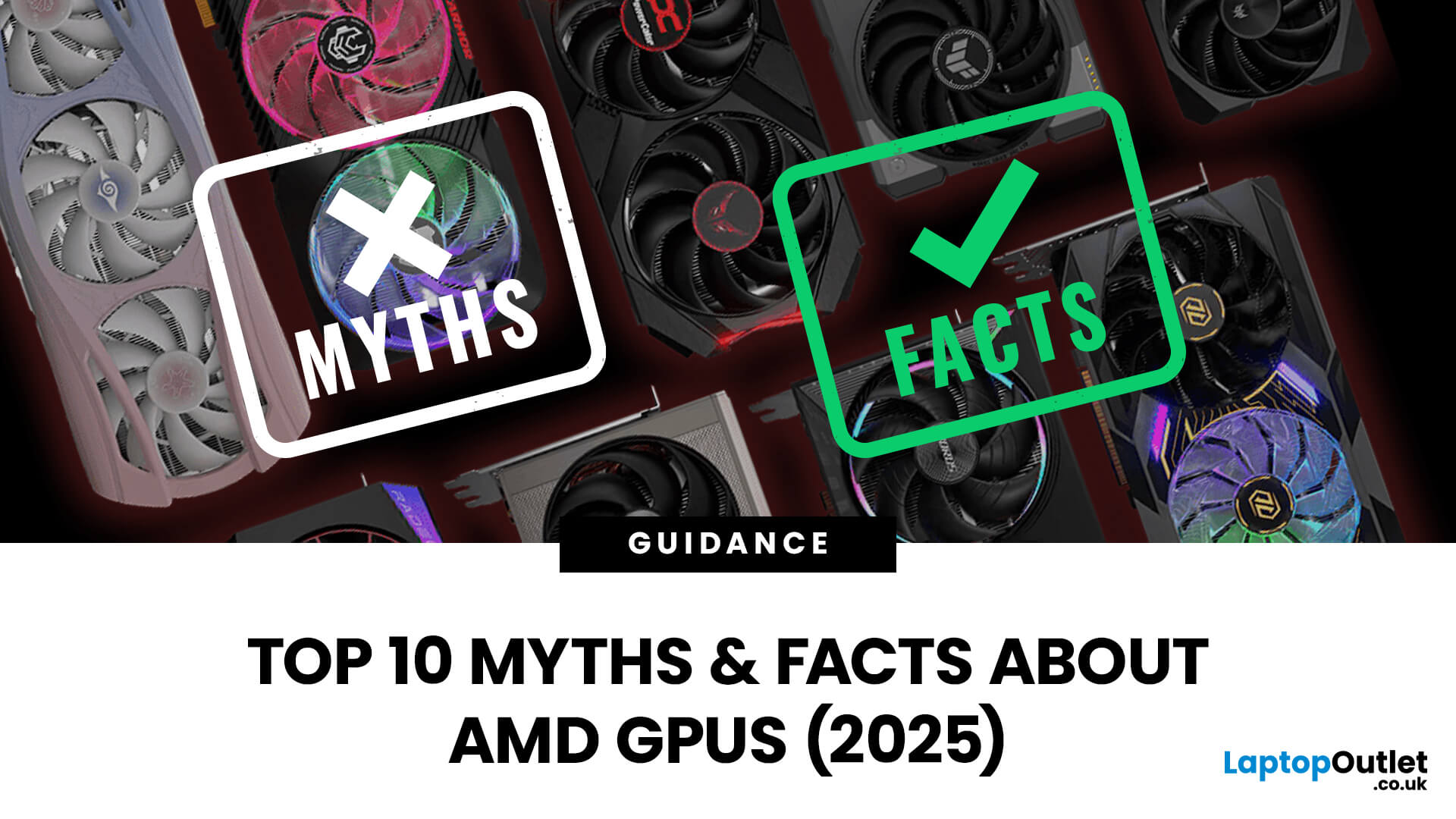
November 07, 2025
You’ve probably heard that AMD GPUs crash too much, they’re only for budget builds, or they can’t compete with NVIDIA. High-key, Most of that’s nonsense.
It’s time to get to the heart of the matter and set the record straight on AMD Radeon graphics cards in 2025.
Let’s bust today the biggest myths and spotlight a few surprising truths about Radeon GPUs.
Myth #1: AMD GPUs Overheat Easily
Truth: Modern AMD GPUs run cool and efficiently.
Behind the scenes: With RDNA 2 and RDNA 3 architecture, AMD significantly improved thermal performance. GPUs like the RX 7600 and 7700 XT maintain stable temps even under heavy load. Most issues arise from poor airflow or outdated perceptions based on older generations, like Vega or early Polaris.
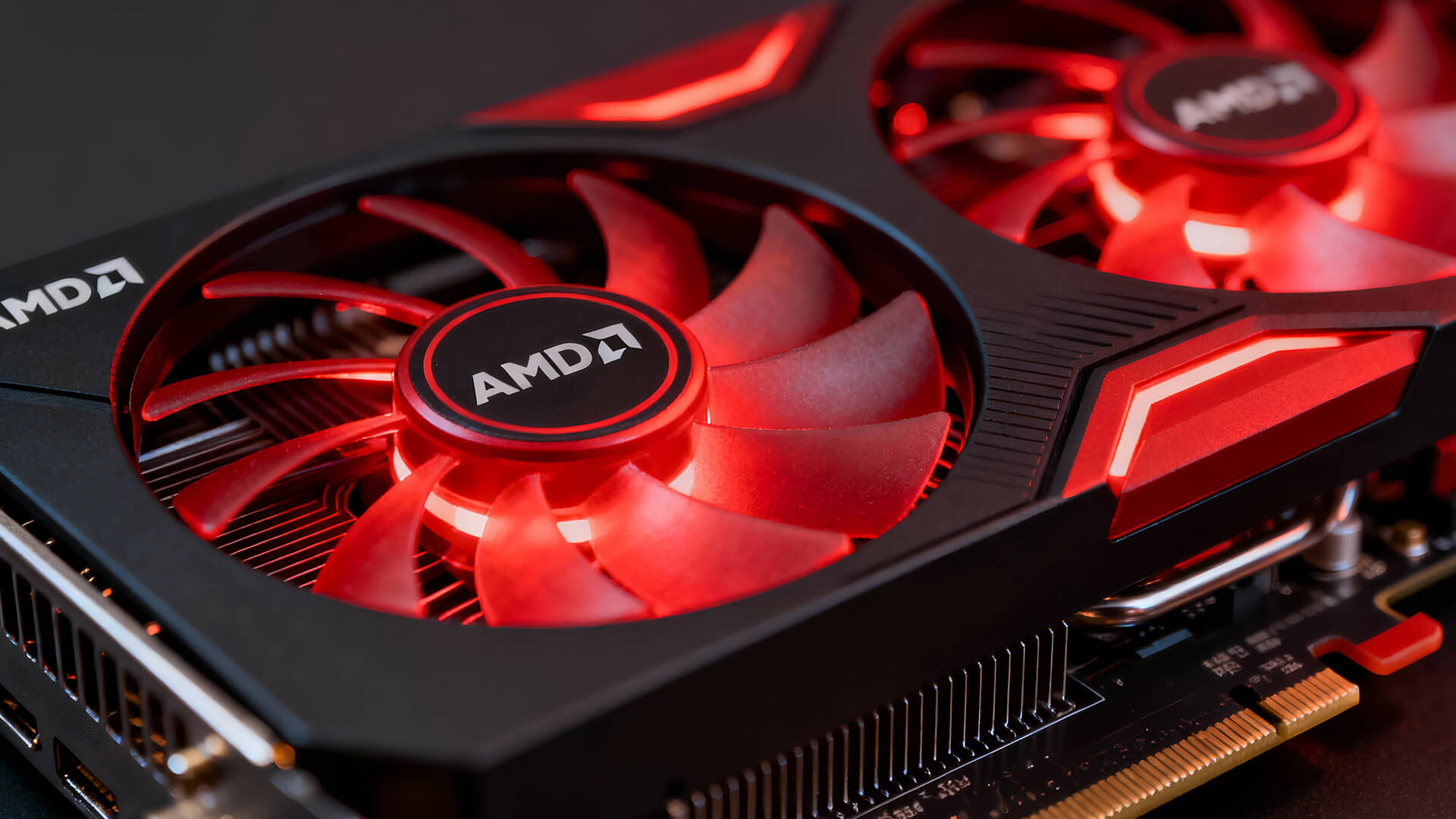
Myth #2: AMD Drivers Are Unstable
Truth: Radeon drivers have matured and are now highly stable.
Behind the scenes: AMD’s Adrenalin Software Suite is regularly updated and now includes advanced features like Radeon Chill, Anti-Lag, and Boost. The “unstable driver”

November 11, 2025
“I Remember When … ”
Hello - I’m the motherboard, and I’ve watched the tech world spin faster than ever. Let me take you back.
In the earlier days of my life (think DDR3 memory, PCIe 2.0/3.0 lanes), I was pretty simple: socket + chipset + RAM slots + some PCIe lanes. Many PCs built in those days lived 3‑5 years before an upgrade.
But around 2022–2024, things started to shift dramatically. Two big inflection points:
- Memory: the shift from DDR4 to DDR5. Suddenly I had to support faster speeds, higher capacities, new signalling.
- Interconnect: the jump to PCIe 5.0, and major upgrades in storage (NVMe M.2) and connectivity (WiFi 6/6E, faster LAN).
For example, a recent spec sheet shows a modern board supporting DDR5 up to 9000 MT/s, PCIe 5.0 x16 for graphics, and 10 GbE LAN + WiFi 7.
From my end, I felt I was becoming more than just a support structure - I was the gateway to future performance.
Watching the Market Shift
While I evolve technically, the business around me
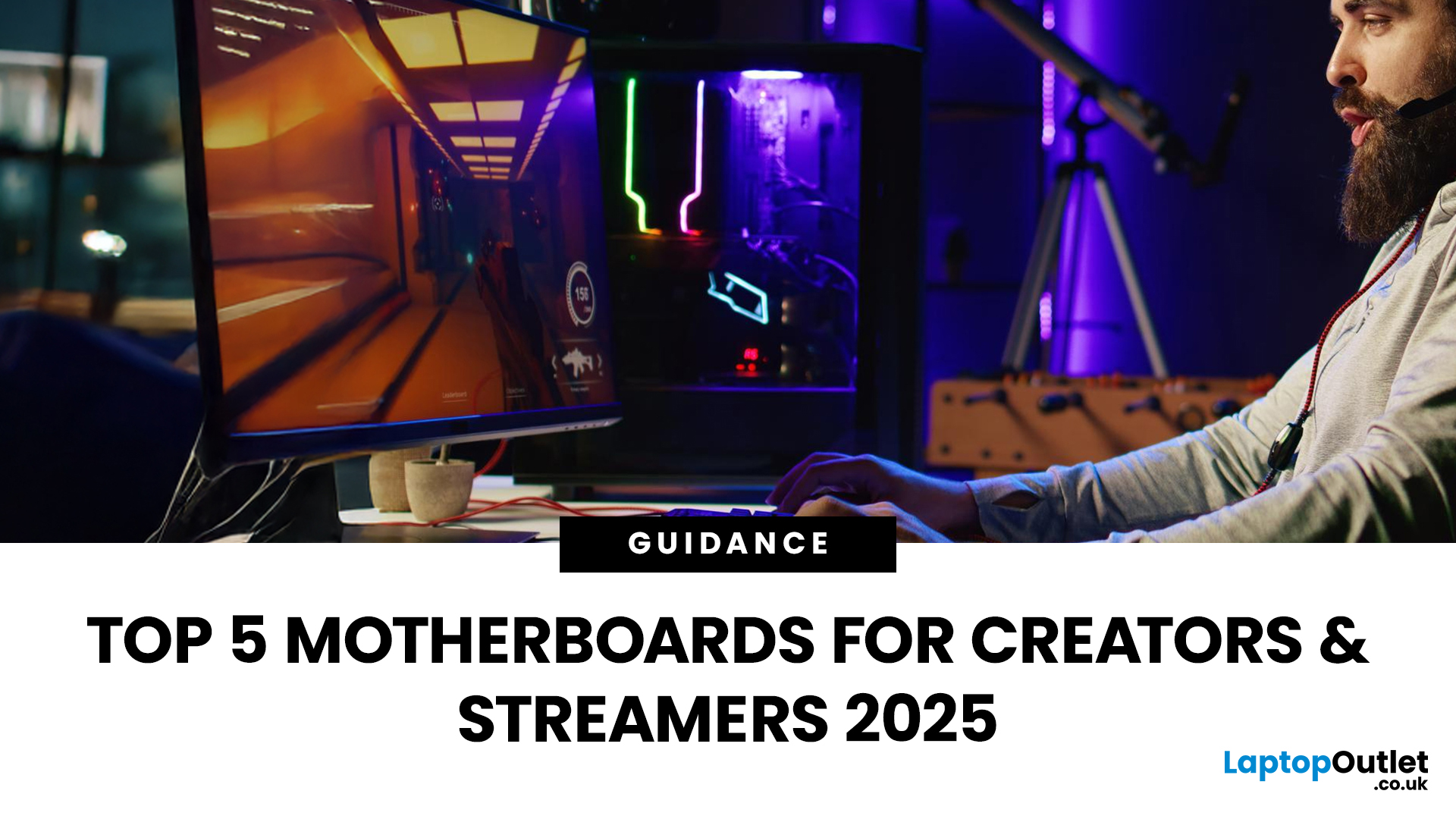
November 13, 2025
When it comes to motherboards for content creators, 2025 brings a new generation of platforms built for creators, streamers, and professionals. These boards go far beyond gaming specifications — they’re designed for high-performance workflows, advanced connectivity, and AI-enhanced creative control. Whether you’re editing 8K footage, producing music, or streaming live, choosing the right Streaming PC motherboard ensures your setup remains powerful, stable, and efficient.
This guide highlights the best motherboards for content creators and streamers in 2025, focusing on connectivity, expandability, and reliability, essential traits for professionals building a Creator PC build motherboard or a high-performance workstation.
What Makes a Motherboard Ideal for Content Creation?
Before exploring the best workstation motherboards, let’s examine what separates a good motherboard from a truly creator-focused one.
Chipset and CPU Compatibility
Modern DDR5 motherboards for creators should feature

November 13, 2025
When building a new PC in 2025, choosing the right motherboard is the best long-term decision you can make. It’s the backbone of your system, and opting for an upgrade-ready motherboard means focusing on key technologies like DDR5 memory, fast PCIe standards, and next-gen connectivity.
This guide explores the essential features that define future-proof motherboards and highlights some top models for both AMD and Intel platforms.
If you are just starting your PC build, you should read our guide on how to choose the right motherboard.
Key Future-Proofing Features for 2025
What exactly makes a motherboard “future-proof”? It comes down to technologies that won't become bottlenecks for your most powerful components over the next five years.
- DDR5 Memory Support: This is non-negotiable. DDR5 compatible motherboards offer significantly higher bandwidth and speed than their predecessors.
- PCIe 5.0 Connectivity: This is crucial for both the primary graphics slot (for next-gen GPUs) and at least
